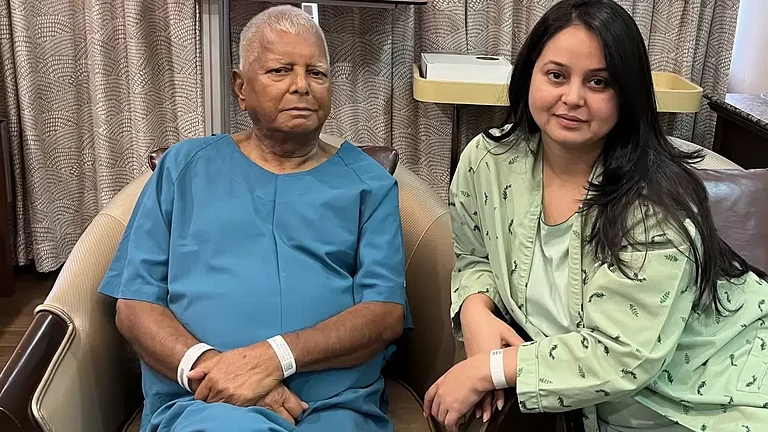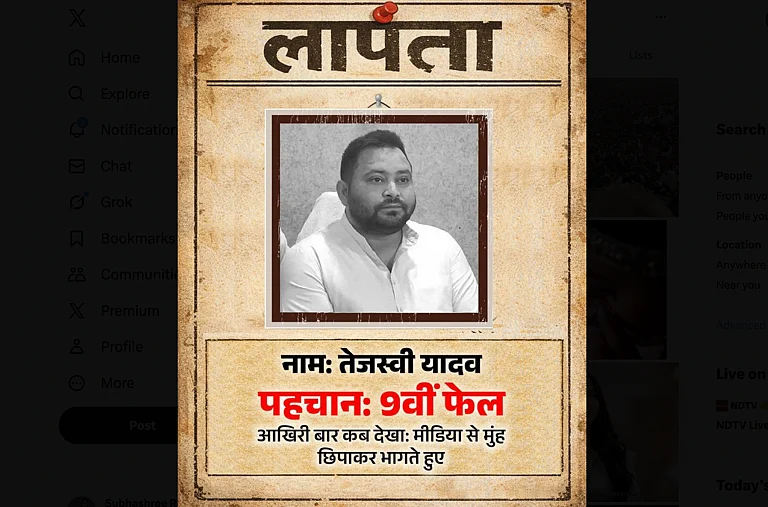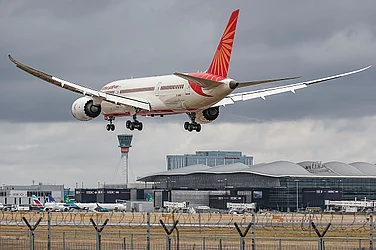"If human beings die, who will ring the bell of temple... Whenever there is a danger of riots even at the cost of losing political power, we will never compromise”
Addressing a gathering of thousands of people from Patna, Lalu Prasad Yadav in 1990 made it clear that whatever it takes, he would not compromise with the communal forces. At the peak of L K Advani’s Ratha Yatra that was approaching Ayodhya with much gusto and the slogan ‘Saugandh Ram ki khate hain mandir vahin banaenge’- the only person standing between the possibility of demolition of the mosque and the seemingly invincible chariot - was the 42 years old Chief Minister who assumed the office just seven months back.
As the consecration ceremony of Ram Mandir has taken the political centre stage, one can’t help but recall the time when a newly elected CM stood against the popular sentiment that was evoked by one of the senior-most leaders of the second largest party in the Centre.
It was October 19, 1990. Starting from Somnath temple in Gujarat - passing through several states resulting into communal frenzy and consequent riots- Advani’s Yatra reached Bihar. The plan of the Yatra was to reach Ayodhya and lay the foundation of the temple at the disputed site of Babri Masjid.

Media reports suggest that Yadav thought of arresting the senior BJP leader when he entered Dhanbad only. During this period, the Deputy Commissioner of Dhanbad was Afzal Amanullah who was the son-in-law of fierce Muslim leader and the convenor of Babri Masjid Action Committee Syed Shahabuddin. Had Amanullah arrested Advani, the things could have turned worse giving it a communal colour. So, it was decided to let Advani pass through Dhanbad uninterruptedly.
However, in 2017, Yadav wrote in a piece that his original plan was to arrest Advani when the Howrah Rajdhani would enter Bihar- somewhere near Sasaram- around 2 am. “My district magistrate of Rohtas, Manoj Srivastava took Railway officials into confidence and the plan was to stop the train at a Railway cabin and arrest LK Advani. But this plan was leaked, so we needed a new one,” wrote Yadav.
Meanwhile, the Yatra reached Patna on October 23 where Advani addressed a grand rally and moved towards Samastipur to take a day’s rest. Arrangements were made for them at circuit house. While it was extremely difficult to make any plan of arresting the senior leader without media glare, Yadav- desperate to save the country from the ensuing communal frenzy- took the risk. He decided to involve very few people so that there was no repetition of what happened at Sasaram.

His meticulous plan started with him calling Sudhir Kumar, the then District magistrate of Dumka that has a picturesque guest house in Masanjor. Yadav told Kumar that the next morning he would be there and hence, the security should be beefed up. He also stressed that no one should be around it.
He then called up a few officers to Samastipur of whom one was R K Singh who later joined BJP and became a union minister. He also got in touch with the Chief pilot Avinash Babu and told him to be ready for an early flight.
As the pitch was ready, it was time to find the right moment to strike. The Bihar CM neither wanted media attention, nor he wanted his officers to encounter any large crowd that was moving along with Advani’s chariot. The wait was, nonetheless, longer than expected.
In the wee hours of October 24, Yadav masquerading as a journalist called the Samastipur circuit house to confirm that there was nobody around. “I said I was Gonu Jha a local newspaper reporter and, in Maithili, asked about LK Advani. The man who picked up the phone told me he was asleep. He confirmed that his supporters had left. I wanted to make sure that the forces would not have to deal with a huge crowd of supporters when they landed to arrest him,” wrote Yadav.
In the middle of the night the team reached the circuit house with warrant and arrested Advani and Ashok Singhal. Both were immediately flown to Dumka and were kept in the circuit house for several days.
Advani’s arrest, nevertheless, changed the political course of the country. Back in Delhi, Atal Behari Vajpayee rushed to the Rashtrapati Bhavan and pulled out their support from the V P Singh government leading to its early fall. Several political careers were put at stake but Yadav didn’t buckle down.

Those who were in Samastipur on that fateful day recall that the news of Advani’s probable arrest was in the air. It was just a matter of time, they say. A Delhi-based senior doctor who hails from Samastipur, says, “There was not much brouhaha regarding the arrest. There were a few elements who wanted to communalise the environment. But for the rest of us, it didn’t matter much.”
He also spoke about the peaceful coexistence of the two communities in Samastipur town that wrote a new chapter in the history of Indian politics. “We always maintained good community relations. The Ratha Yatra and fervour around it couldn’t affect it,” he adds.
But the history has passed through troubled waters- sometimes sweeping away the memories of resilience and social justice. In the eve of Ram Mandir inauguration, when the participation of the state in religious rituals is no more frowned upon, a few words of Yadav seem to be extremely relevant, if not prophetic: “I had the option of felicitating him as his Rath Yatra to Ayodhya rolled into Bihar and giving him safe passage through my state. That would have ensured that the government of then Prime Minister VP Singh would continue, but I decided to make that sacrifice. Because in retrospect any observer would say that by sacrificing my own government, we saved the country at that time.”



























